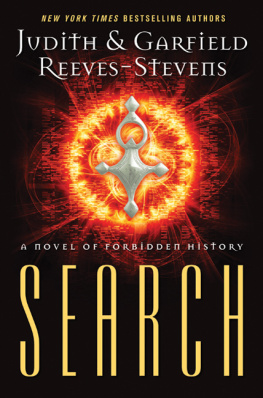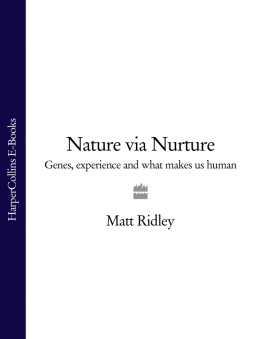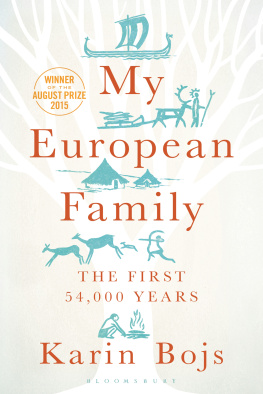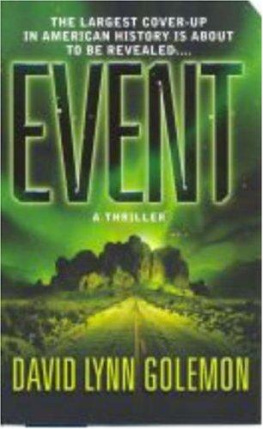ALSO BY JUDITH &
GARFIELD REEVES-STEVENS
Icefire
Quicksilver
Freefall
The Chronicles of Galen Sword
ACKNOWLEDGMENTS
At Thomas Dunne, our heartfelt thanks go to our editor, Pete Wolverton, who was the first to hear this story, and who asked all the right questions at all the right times as we wrote it. Thanks, too, to Elizabeth Byrne, for so deftly keeping things organized and moving.
We are also grateful to the entire team that worked with such care and enthusiasm to transform our story from a stack of mundane pages into this handsome volume, including Jonathan Bennett, designer; Bob Berkel, production editor; and India Cooper, copy editor. Many thanks to all.
Were fortunate to have had the support of two fine agents for this books journey from manuscript to printed page (physical and digital). Marty Shapiro has been with us since Icefire, and got this project started. Mel Berger has ably picked up the torch and brought the project home. Our thanks and deep appreciation to both.
Finally, thank you to John Ordover, who was the enthusiastic editor who opened new doors for our writing many books ago, and who remains a trusted first reader who always offers new insights that make our work richer.
Usually in our acknowledgments, we comment on some of the concepts and technologies that helped shape a particular story so those readers who wish to explore certain subjects in more depth have a place to start. For this story, though, those comments could fill a second book, so we invite those who are interested to visit us at www.reeves-stevens.com to read much lengthier comments.
J&G Reeves-Stevens
Los AngelesVictoria, April 2010
Table of Contents
This is a work of fiction. All of the characters, organizations, and events portrayed in this novel are either products of the authors imaginations or are used fictitiously.
THOMAS DUNNE BOOKS .
An imprint of St. Martins Press.
Book design by Jonathan Bennett
SEARCH . Copyright 2010 by Softwind Productions, Inc. All rights reserved. Printed in the United States of America. For information, address St. Martins Press, 175 Fifth Avenue, New York, N.Y. 10010.
Library of Congress Cataloging-in-Publication Data
Reeves-Stevens, Judith.
Search : a novel of forbidden history / Judith and Garfield Reeves-Stevens.1st ed.
p. cm.
ISBN 978-0-312-37744-1 (alk. paper)
1. Human beingsOriginFiction. 2. GeneticistsFiction. 3. DNAResearchFiction. 4. ConspiraciesFiction. 5. SecrecyFiction. I. Reeves-Stevens, Garfield, 1953 II. Title.
PR9199.3.R428S43 2010
813.54dc22
2010020607
First Edition: August 2010
10 9 8 7 6 5 4 3 2 1
For John Bullicz
and for the treasures he left behind
Adam, Justin, and Robin
What we call the beginning is often the end
And to make an end is to make a beginning.
The end is where we start from.
T. S. ELIOT
SEARCH

SEARCH

CORNWALL 7,312 YEARS B.C.E .
When it was known that the last of the shadowmen had sailed from their stronghold at Kassiterithes, the people of the oak began their attack, and even the innermost walls of stone were breached by dusk of that first day.
Fields of wheat blazed beyond the wooden stockades that formed the outer walls. The flames sent thick ropes of black smoke to dim the setting sun, bringing on night too quickly and too soon.
The bronze swords and battering rams of the oak people smashed through interior doors never meant for defense. Their torches set fire to the blasphemous tapestries torn from the walls. The library of scrolls and sewn parchments and map rubbings from the Hall of the Navigators itself became ash.
The shadowmens followers scattered, rushing through supply tunnels built into the cliffs to avoid the winter snows. Some escaped that way. Some did not. Unarmed, those that were captured were savagely cut down. Their heads were carried on spear points, and there was no reason for it but hatred and fear.
By the time the stars shone weakly through the pall of dying smoke, the slaughter was over. Blood slicked the cobbled passageways, and desperate handprints smeared smooth stone walls, each block so perfectly aligned. Sword and axe scored intricate frescoes, erasing the story record of those who had built this place and how they had come here. Braziers in the great halls were overturned, and the intricate plumbing of clay channels and pipes shattered, so that fire-lit water spilled freely from common baths and latrines as if the crashing sea outside were already returning to reclaim its own.
In the end, after mutilated bodies had been heaped on burning pyres, only one last thing remained to be donefind the treasure that all men knew was hidden here.

The leader of the oak people, chieftain by blood and by combat, began the search, his sword sheath still dripping red. His full russet beard was braided with the knucklebones of adversaries he had killed in earlier battles. His pale cheeks were daubed with ocher mud. His leggings, foot wraps, and stiffened chest plate were made of deer and bear hides. The bark-and-tinder torch he carried high, wrapped in cedar cord, sputtered loudly, sending hissing droplets of rendered fat to sizzle on his scarred forearm without his notice. All he could think of was uncovering the secret trove that would enrich his power and ensure it would pass down to his sons, and to theirs.
At the farthest point in the deepest passageway, he found the carved pair of doors he searched for. As the stories had told, they were bound by iron bands and were themselves made from thick oak planks carved with oak leaves, colored green and red.
That the defilers of his land had dared to conjure the essence of the sacred tree enraged the chieftain. The oak was painted on his chest plate in deers blood and charcoal, identifying his line and his kin. It had no place here.
He kicked at the doors, and they sprang open. All the stories said that the shadowmens greatest treasure would be found here, but even this vault was undefended. What fools the masters of this place had been.
As he stepped into the arch of the doorway, the chieftain saw the pale amber flicker of an oil lamp. Instantly, he drew his sword, eager to kill again.
But only a follower waited within, head bowed, hands clutched to her chest in subservience. Her hair was the color of dried grass, and her skin was as pale as his own. Her telltale white tunic, hemmed in thin strips of purple cloth with strands of purple string at each corner, was the mark of one of their concubines. Once, shed been a child from his own village or another nearby, given in trade years ago. Despoiled, she was worthy now only of death. He stepped forward to dispatch her.
Then he hesitated, awed by this room.
His eyes fixed on the domed ceiling, more than twice his swords reach above him. In the light of his torch and the concubines lamp, he saw the gleam of hundreds of small disks of silver, their arrangement matching some of the patterns of the stars at night. The circular, plastered wall beneath was overlaid with other patterns: swaths of brown and green against blue, cut by black lines that arced across the blue from point to point. Why anyone would do this made no sense.
Next page













